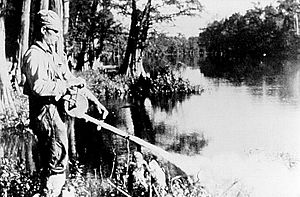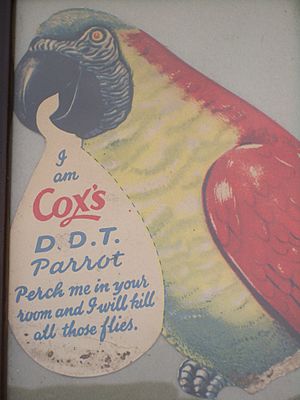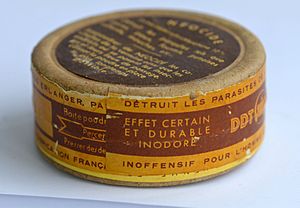DDT facts for kids


DDT is a well-known pesticide. The abbreviation stands for Dichloro-Diphenyl-Trichloroethane, one of its names. The Swiss chemist Paul Hermann Müller was awarded the Nobel Prize in Physiology or Medicine in 1948, for his discovery. In the 1960s there was a study that questioned if it was good to spread large amounts of DDT indiscriminately. The study also found that DDT could cause cancer. DDT is also highly poisonous to birds and other animals further up the food chain. This is why DDT was replaced by other pesticides. The Stockholm Convention which took effect in 2004, restricts the use of DDT to vector control. The convention does not affect the use of DDT for public health issues. This is because there are very few affordable alternatives. DDT is still widely used in India, North Korea and possibly elsewhere.
Images for kids
-
Commercial product of Ciba-Geigy Néocide (powder box, 50 g) containing 10% DDT, made in France.
-
An airplane spraying DDT over Baker County, Oregon as part of a spruce budworm control project, 1955
See also
 In Spanish: Dicloro difenil tricloroetano para niños
In Spanish: Dicloro difenil tricloroetano para niños






